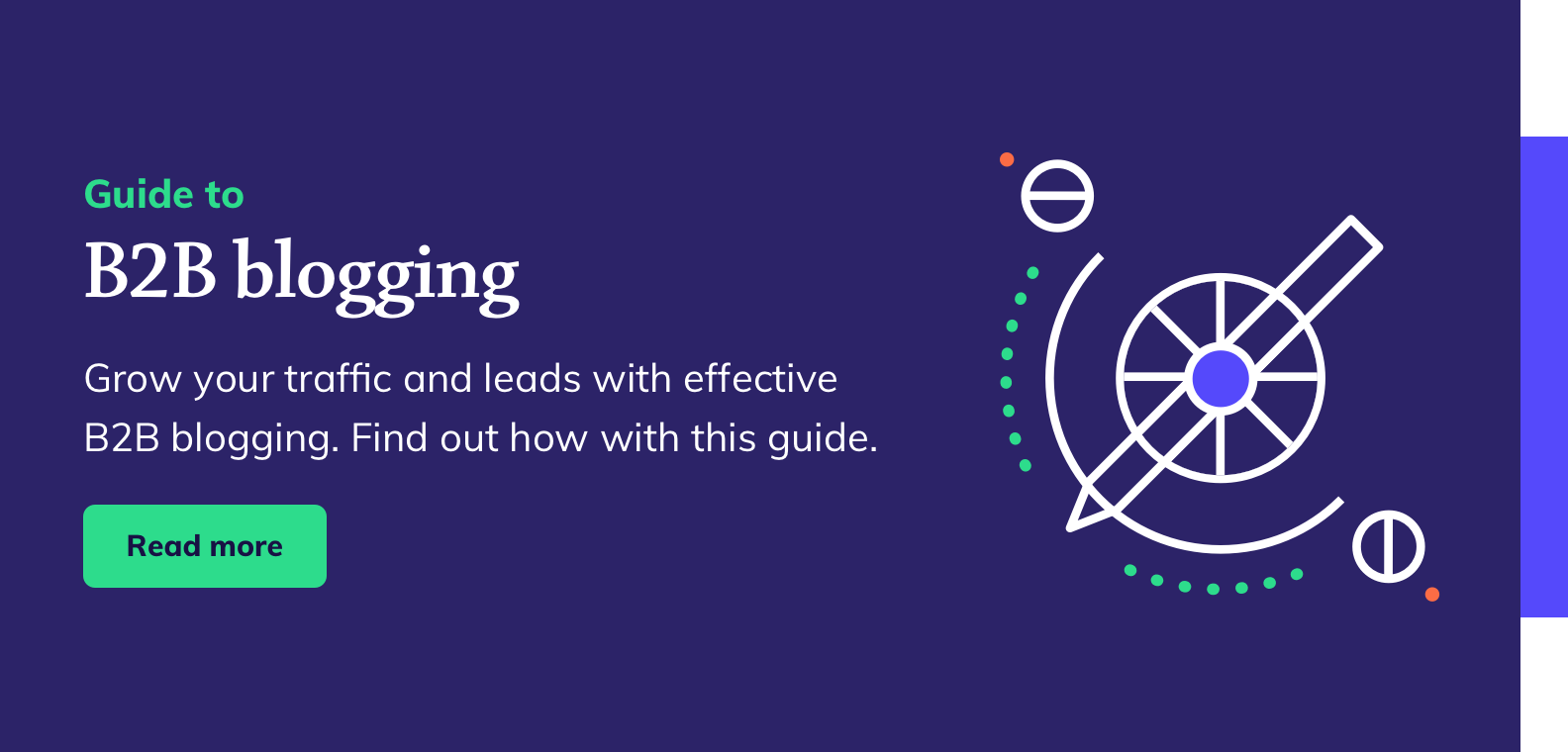Beyond creating great content, business blogs need effective internal linking, calls to action, and post layouts to deliver maximum ROI as quickly as possible.
It's no secret that more and more B2Bs are spending on content marketing.
A 2017 study by the Content Marketing Institute found that 89% of B2B marketers were already using content marketing, and the majority of those that were not, were planning to. In 2018, HubSpot found that 55% of marketers surveyed said that blogging is their top inbound marketing tactic.
So blogging is popular. And with good reason - the barriers to entry are low and the results compounding. What's not to like?
But many business blogs fail to achieve their full potential due to a few common mistakes and omissions.
You see, blogging isn't just the act of regularly publishing new, valuable content - though that is the crucially important foundation - it’s the art of adding to an interconnected marketing machine that builds your traffic, lead and demand generation capability, simultaneously.
Here's how to make every blog work harder in all three of these roles, and to improve your overall blogging ROI.
Better internal linking
Linking keywords in the text of your blog posts to other pieces of information is how you signal the presence and importance of those pieces to users and search engines. But business bloggers often fail to include links at all or, if they do have them, exclusively link to external resources.
Links to external resources are valuable and important. They add credibility and trustworthiness to your content while building connections with other authors, which can aid promotion and reach.
But external links should be balanced with internal links to other blog posts, which a fair number of business bloggers get right, and pillar pages and main website pages.
Internal links to pillar pages and main website pages are important for indicating which pages in your site are relevant to which topics. Consistently linking the target keywords to the relevant pages will improve their chances of ranking more highly in search engine queries for those keywords - particularly if the page in question isn't on you main navigation. Consequently, more people will discover your key content, via blog posts and search engines, where they are more likely to progress further along the funnel.
Better calls to action
Most readers of your blog will land (predominantly from search engines), read, and leave, which is fine - one of your wider goals being to get found multiple times during a buyer's research.
Each visit is, however, an opportunity to present your reader with more in-depth or valuable information, prompting them to continue their journey on your website, deepening their engagement with your brand, and potentially even converting them into a known contact. After your main website navigation, calls to action (CTAs) are one of the most effective ways to do this, if used correctly.
The correct approach is not to slap CTAs anywhere and everywhere on your blog posts. Certain CTA formats work best in certain placements, while others have very little impact.
The golden rule is context. CTAs always perform best when they are presented at the right time, in the right place and with the right message. Always think about your reader and what they may need at any point in your content, and what their objectives at that time might be, before deciding which CTA to offer. Not sure what these might be? Well remember, in many ways, they are just like you.
Banner CTAs work well at the very end of posts, where readers who have finished the content respond to the eye-catching nature of visual calls to action indicating follow-on content or offers.
Text-based CTAs on the other hand work well within the body of posts since they don't disrupt the reader who wants to continue on down the post but can catch the readers who will never reach the banner CTA at the end.
Remove clutter and distractions
Many of the blogs we see waste reader attention on unnecessary and ineffective distractions and clutter.
They have side bars rammed with subscription forms, topics lists, post archives, ubiquitous CTAs and the like. In and around the post we copious author details, blog topics, social sharing buttons, related posts, and more.
The reality is, the vast majority of visitors to your blog will never interact with any of these. On the whole, buyers don’t subscribe, that CTA in the sidebar of every post doesn't get clicked, and visitors don’t explore other posts in the same topic.
That all may sound like a non-issue, but all the time that those elements are going unused, they are still distracting your reader's eyes, mind and attention away from where they should be - on your content.
Removing the side bar fully and minimising distractions within the post body will focus the reader on your content, improving their engagement and comprehension, and increasing the click through rate on the primary CTAs you include.
Changing your blog design may require graphic design and development resource but it is worth it, as the changes you introduce can improve the performance of every blog post and have a pronounced effect on overall results.
What results can you expect?
Implementing the recommendations outlined here optimises the role of each individual blog post in the creation of a clear and effective SEO hierarchy within your site, maximises the CTA click through rate and subsequent lead generation results, and ensures higher rankings for your all-important pillar content.






